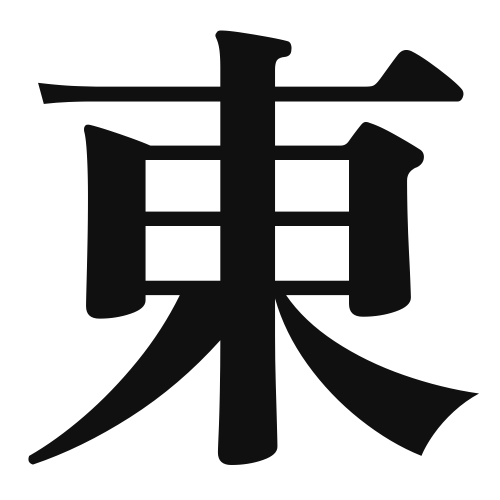1. Overview of Meaning
The kanji “東” (pronounced “higashi” in Japanese) means “east.” It represents the direction where the sun rises and is often associated with new beginnings and hope.
2. Formation and Radical
The kanji “東” is a compound character that combines elements to convey its meaning. It is made up of the radical “木” (tree) and the character “日” (sun), symbolizing the sun rising behind trees in the east.
The radical for “東” is “木,” which relates to nature and growth.
3. Examples of Usage
Common words and phrases that include “東” are:
- 東口 (higashi-guchi) – East exit
- 東日本 (Higashi-Nihon) – Eastern Japan
Example sentence in daily conversation:
「私の家は東にあります。」 (Watashi no ie wa higashi ni arimasu.) – “My house is to the east.”
4. Synonyms and Antonyms
Similar kanji with related meanings include:
- 南 (minami) – South
- 西 (nishi) – West
- 北 (kita) – North
Antonyms include:
- 西 (nishi) – West
5. Cultural and Historical Background
The concept of “east” holds significant cultural importance in Japan, often symbolizing the direction of the rising sun, which is a powerful symbol in Japanese culture.
Proverbs and idioms related to “東” include:
- 「東の空に希望を持つ」 (Higashi no sora ni kibou o motsu) – “Hold hope in the eastern sky.”
